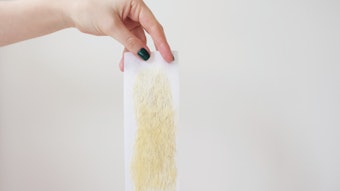With the summer months—and temperatures—quickly approaching, skin care professionals should be aware of how the change of season can affect people with rosacea.
While the sunny days of summer may be associated with outdoor fun, new survey results show that it is also the time when people with rosacea must take the most precautions to prevent flare-ups of this unsightly, red-faced disorder now estimated to affect more than 14 million Americans. For many, the survey also found that even the cold days of winter can present special challenges.
In a recent survey of 1,190 rosacea patients conducted by the National Rosacea Society (NRS) and published in Rosacea Review, 85% said their rosacea is affected by changes in seasons. Nearly half said their symptoms are at their worst when hot weather arrives, and 46% said they have to make the most lifestyle adjustments during this time to reduce the likelihood of a flare-up of signs and symptoms.
"The sun and hot weather are such common rosacea triggers that it should not be surprising that rosacea is often aggravated in the summer," said Dr. Lisa Maier, assistant professor of dermatology at the University of Michigan. "Everyone should minimize sun exposure and use sunscreen during all seasons, but rosacea patients should be even more cautious than most."
In addition to using sunscreen with an SPF of 15 or higher, rosacea sufferers affected by sun and heat are advised to stay in a cool, air-conditioned environment during midday or when the weather is especially hot. Overexertion is also a common rosacea trigger, and sipping a cold drink or chewing on ice chips can help prevent or reduce the facial flushing that often accompanies strenuous activity.
The survey found that cold weather may be problematic for many rosacea sufferers as well. Thirty-five percent of all respondents and 46% of those who live in the North said their symptoms are at their worst during cold weather, when raw wind and biting temperatures can irritate already-sensitive facial skin.
Nearly a third of the survey respondents and 44% of those in northern areas of the country said they make lifestyle adjustments to ward off rosacea outbreaks during winter, such as covering their face with a scarf before going outdoors or avoiding facial flushing by steering clear of the piping hot beverages often served on chilly days.
The good news is that rosacea flare-ups can often be successfully prevented. The survey found that, regardless of seasonal changes, 87% of the respondents said medical therapy and making lifestyle changes had helped reduce their rosacea signs and symptoms. "If patients notice that their condition tends to worsen during a certain season, they should be on the alert to take whatever seasonal steps may be needed to avoid their personal triggers," Dr. Maier said. "They should also talk to their dermatologist for further guidance on managing their condition."
Rosacea is a chronic disorder that is often characterized by exacerbations and remissions. It typically begins at any time after age 30 as a flushing or redness on the cheeks, nose, chin or forehead that may come and go. Over time, the redness tends to become ruddier and more persistent, and small blood vessels may appear. Without treatment, bumps and pimples often develop, and in severe cases, the nose may become swollen from excess tissue. In many patients, the eyes are also affected, feeling irritated and appearing watery or bloodshot.
Although the cause of rosacea is unknown, its signs and symptoms can be controlled with medical therapy and lifestyle changes to avoid factors that may aggravate the condition. The most common rosacea triggers include hot or cold weather, sun exposure, emotional stress, wind, heavy exercise, alcohol, hot baths, spicy foods, humidity, indoor heat, certain skin-care products and heated beverages.
Information and materials on avoiding trigger factors, as well as other key aspects of rosacea, are available on the NRS Web site at www.rosacea.org.










